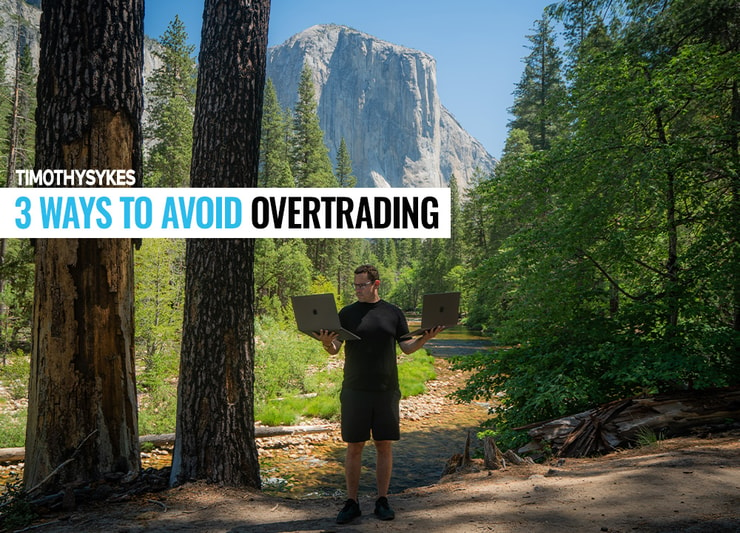I KNOW what’s going through your head right now.
With markets peering over the cliff, you’re thinking…I can make bank if I short the market here.
So you buy a couple of put options on the S&P 500 for a few hundred bucks and wait.
Time passes, and the market chops around for a few days.
You get impatient and cut the trade at a small loss.
The moment you do, stocks plunge.
Cursing your luck, you jump back into your short, only to watch the market flip like a pancake and rip higher.
Now, you’ve more than doubled your loss.
I’m just like everyone else. I get jealous when I miss a trade, especially when others score huge profits.
But let me tell you the secret to my long-term success…
My best trades are the ones I never take.
Yes, I still make mistakes, take ugly setups, or ignore my gut.
However, I accept my flaws.
Rather than fight them, I work with them using three simple techniques.
These can help you avoid overtrading and keep your losses to a minimum.
Because I promise you, not everyone will survive this market.
I want you to not only make it through but be in a position to capitalize on the huge opportunities that await us on the other side.
Limit Your Trading Hours

My good friend Tim Bohen is a giant of a man.
Yet, he knows his limits.
Like me, he’d rather limit his trading to just a few hours a day, freeing up the rest of his time for his family or, in my case, travel.
While news catalysts can come out at any time, the majority of them tend to be released around 8:30 a.m. est.
If you like quick action and are good at managing risk, premarket trading might be right up your alley.
The most active trading time happens right at the 9:30 a.m. est open.
This is when traders and funds jockey for position and market makers work on price discovery.
It’s a great time to find quick opportunities for morning panic dip buys.
Other traders, like Mr. Bohen, will wait until after 9:45 a.m. to look for trades.
Usually around 2:00 p.m. est or later, I can find trades for stocks that have pulled back hard or are on a multi-day run.
What should be obvious is that I tend not to trade between 11:00 a.m. to 2:00 p.m.
I’m not saying I never do, but it’s not very common.
And traders who want A+ setups are better off finding the time window that works for them and sticking with it.
Cap Your Trades And Losses

A great way to keep yourself in check is by setting a maximum number of trades you take per day and per week.
Notice how I didn’t specify they had to be losses.
Overtrading doesn’t just come from revenge. It also happens when we get overconfident.
In fact, folks with pattern day trading (PDT) are automatically limited to three roundtrip trades per five trading days.
A lot of people see that as an obstacle.
I see it as a benefit.
PDT accounts already have a mechanism built into them that prevents overtrading.
That means you only need to set a maximum loss limit for the day and/or week.
More Breaking News
- BioVie Inc.: Is it a Rising Star or a Passing Trend?
- Testing the Waters: Is Sibanye Stillwater’s Recent Dip a Chance or a Risk?
- Best Buy Faces Hurdles: Dockworker Strikes Loom Large Over Holiday Season Sales
This is especially important when markets are choppy as they are right now.
Stick With One Pattern

I made my first $1 million trading with my Supernova pattern.
People get it in their heads they have to trade multiple times every day to make money. Otherwise, they’re losing out.
Nothing could be further from the truth.
All it takes is one pattern and well-crafted setups to consistently generate profits.
It won’t make you a millionaire in a month. But it can over time.
I have more than 20+ millionaire students I taught to trade using this same pattern who went on to develop their own methods and strategies.
Even one well-placed trade per week can generate incredible wealth over time.
What I love about my Supernova pattern is how easy it is to identify, and how well it works with small accounts.
If you’ve never tried it, I encourage you to check it out. You won’t be disappointed.
—Tim


Leave a reply